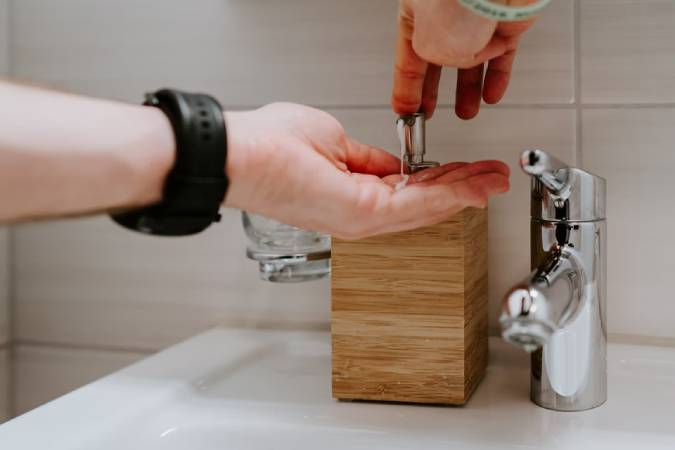Ranjit, 27, gets drunk each time he has to manually clean a sink full of human feces,
a exercise this is nevertheless giant in India regardless of
being banned and full-size in the ones underneath. Inflexible social machine.
A young New Delhi resident and his colleagues frequently go
out at night time to smooth pits, sewers and public and personal bathrooms
below the influence of alcohol to assist them address the smelly smell of
excrement, even though the practice further increases the dangers . Career.

“One of us goes into a septic tank and fills a bucket
tied to a rope.
Another man or woman lifts the bucket from the floor, we
remove the excrement and repeat the method. It takes six to eight hours to easy
the well, ”Ranjit explains to Efe from his one-room residence in a terrible
neighborhood inside the capital.
One of Ranjit's household, who had worked for decades in
this career taken into consideration unworthy by way of the best castes of the
Hindu hierarchy, told Efe that "the scent of the nicely is simply too
robust, it receives into our heads."
In idea, the practice has been prohibited through law on
account that 1993,
and the government has released several worker
rehabilitation applications, further to constructing more than ninety million
toilets inside the closing five years which have been able to compost excreta
and remove maximum of it. Of dangerous materials. Hazard related to guide cleansing.
But in place of removing it, terrible law enforcement and
Hindu beliefs approximately impurity have compelled people to clandestinely
smooth toilets, in keeping with a World Health Organization (WHO) report
launched closing November.
“We don't have gloves or masks (as safety objects), we pass
down in our undies. I must were sixteen or 17 once I first stepped into the
septic tank, ”says Ranjit.
Like him, his own family is made from unskilled health
workers who face social stigma and discrimination on a each day basis for doing
jobs from which they've little hazard of escaping.
“Before I observed my father, however now he is ill and I do
it by myself. Sometimes my younger brother accompanies me ”, he explains.
Bizwada Wilson, director of Safai Karamchari Andolon, a
non-governmental agency that works to get rid of guide lavatory cleansing,
explains to Efe that the “hard” caste device of Hindus is truely forcing parts
of the populace to “earn cash. Life in jobs that no one wishes. . Do".
“Someone tells them that in the event that they do not easy,
who will? Because (the workers) are illiterate, they assume that is accurate,
so there may be additionally an element of self-justification, ”says Wilson.
Ranjit goals of opening a small save next door, but he
fears that the stigma of “untouchable” that accompanies his community will not
force everybody to shop for his products.
“There is not any different task for me, I am a roll (one of
the lowest social strata). What I can do? I ought to help my youngsters ”,
complains a young man who earns three hundred to four hundred rupees (four to
4). And $ 6) for each septic tank to be cleaned.
For one of these poorly paid activity, in line with a WHO
file, cleaning toilets carries an extended listing of dangers, starting from
the danger of carbon monoxide poisoning to bronchial asthma, gastroenteritis,
cholera, typhoid, hepatitis, polio and the risk of infection from cuts and
wounds.
Fatal accidents occur frequently with this list of
hazards.
Manju, 44, lost her husband, Harkesh Jalsingh, eleven years
in the past whilst she turned into cleansing the toilet.
According to the effects of the autopsy, to which Efe had
access, loss of life came about "by inhalation of poisonous gases."
Manju must obtain repayment from the authorities of
100,000 rupees (approximately 1,250 euros), however she couldn't prove that her
husband died even as cleaning the septic tank.
“I move from one office to another, they inquire from me how
my husband died. Everyone knows that he fell right into a septic tank and died,
I don't understand what they need, ”she says.
From 1993 to July 2019, 814 people died while cleansing
septic tanks, in keeping with the kingdom country wide fee Safai Karamcharis
(NCSK), which appears after the properly-being of employees within the sector.
However, the Wilson Association has extended the death
toll to one,760 within the past 25 years.
WORKS ALSO CARRIED OUT BY WOMEN
The work is not confined to guys, girls from the lower
strata of the social ladder also smooth septic tanks and latrines by hand at
home and in colleges.
Compared to cleansing toilets, gutters, and sewers at train
stations, women's work is barely less physically demanding, but the loss of gadget
and the fitness dangers are similar.
Mina, who's in her 30s and lives in Old Delhi, dreamed of
becoming a member of the Indian navy when she changed into a baby.
However, as she explains to Efe,
globalmarketingguide bloomersweb techbizcenter marketing2business